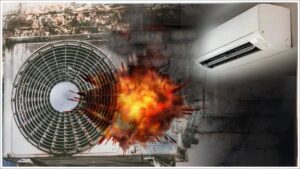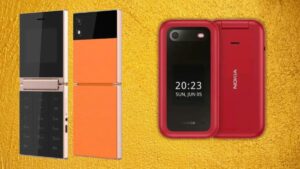Air cooler buying guide: Detailed list and description of factors to be considered while buying an air cooler
As the summer peaks across the country, the heat is becoming unbearable. With over a month and a half still left for the monsoon season to begin over the Indian subcontinent, people are looking to buy air conditioners and air coolers. Here is a comprehensive air cooler buying guide that help you select the right product for your home or office.
Both air conditioners and air coolers have their pros and cons and generally are not substitutes of each other. Air conditioners provide effective cooling in both dry and humid conditions. They can bring down the temperature to the desired levels quickly to make you forget the perils of summer. However the air conditioners are not entirely without cons. First, they consume a lot of electricity and are expensive to purchase. Secondly, not everyone feels comfortable with an air conditioner. Some people need doors and windows open for the fresh air to come in, otherwise they feel suffocated. Air conditioners also cause joint pains and respiratory ailments in some.
On the other hand, air coolers provide fresh and cool air at the fraction of the cost of acquisition and cost of running an air conditioner. Though they cannot cool as effectively as an air conditioner still air coolers are the first choice for many. Let us look at some of the advantages of an air cooler.
Advantages of an Air Cooler
- Air coolers are far less expensive to buy as compared to air conditioners.
- The electricity consumption and thus the cost of running air coolers is also much less as compared to air conditioners.
- Air coolers work in open environments with doors and windows open and provide fresh air circulation in the room.
- In dry conditions air coolers add humidity to air, soothing your airways and helping prevent respiratory illnesses.
- Unlike air conditioners, air coolers are portable and can be moved from room to room depending upon requirement.
- The cost of maintenance for an air coolers is very less as compared to an air conditioner because of very few parts and simple technology.
- Air conditioners consume a lot of electricity when turned on initially to pre-cool the room. Air coolers simply start off and run at a constant consumption of electricity irrespective of the temperature of the room.
Air coolers have their advantages over air conditioners but they definitely cannot match the cooling effectiveness of an air conditioner. So it is a matter of personal choice whether to buy and air conditioner or an air cooler.
Many people purchase air coolers as a secondary cooling device for other rooms where there is not air conditioner installed.
Whatever reason you are thinking of buying an air cooler, our air cooler buying guide will help you make the right choice for your specific requirements.
Air Cooler Buying Guide
We have divided this comprehensive air cooler buying guide into three sections.
1. Type of Air Coolers
Air coolers come in different forms and shapes – each suited to cater to a different need.
1.1 Desert Coolers

- Can cool large rooms due to higher capacity and performance
- Do not require multiple fills in a day due to larger tank
- Facilitate more effective cooling with integrated cooling pads
- Provide air circulation via huge fans
1.2 Tower Coolers

- Can cool medium-sized to large rooms
- Ideal for restricted spaces due to tall and thin design
- Integrate premium technology with cooling pads
- Provide air circulation via fans or blowers
1.3 Portable Coolers

- Can cool large rooms due to higher capacity and performance
- Do not require multiple fills in a day due to larger tank
- Facilitate more effective cooling with integrated cooling pads
- Provide air circulation via huge fans
1.4 Window Coolers

- Can cool small to medium-sized rooms
- Consume lesser energy and are quieter
- Facilitate cooling for multiple hours despite smaller water tank
- Require installation
2. Air Cooler Capacity
A sufficiently sized air cooler is essential to provide adequate cooling for your room. Generally, personal coolers are advisable for small to medium rooms, while tower and desert air coolers can cool medium to large rooms. Always check on the cooling area of the model you pick so that the cooling range coincides with the size of your room.
Cooling area is the carpet area of the room which needs to be cooled. CFM stands for Cubic Feet per Minute and refers to the amount of air that the cooler can move or circulate within a minute. A higher CFM rating generally means that the air cooler can deliver more cool air, which is beneficial for larger rooms or spaces that require more significant cooling.
- 0-150 sq.ft. – CFM required is approximately 0-600. Recommended capacity – Below 15 liters.
- 150-300 sq.ft. – CFM required is approximately 600-1200. Recommended capacity – 11 to 30 liters.
- 300-450 sq.ft. – CFM required is approximately 1200-1800. Recommended capacity – 31 to 50 liters.
- 450-600 sq.ft. – CFM required is approximately 1800-2400. Recommended capacity – 41 to 60 liters.
- 600-750 sq.ft. – CFM required is approximately 2400-3000. Recommended capacity – Above 60 liters.
3. Key Features
The features of your air cooler play an important role in the functioning of your air cooler. There are several things you must consider.
3.1 Cooling Pads
Cooling pads amplify the cooling capacity and longevity of an Air Cooler. They are attached to the side of the cooler, thereby further cooling the air passing through. There are two commonly used cooling pad types:

Honey Comb
- Composed of cellulose, designed like a honeycomb
- Lower maintenance costs
- Extremely efficient cooling
- Highly durable and long-lasting
Aspen (wood wool)
- Composed of synthetic fibres from wood shavings
- Higher maintenance costs
- Medium cooling effect
- Pricing is more accessible
3.2 Inverter Air Coolers
These air coolers conserve power and improve energy efficiency
- Compatible with inverters
- Ideal for homes with power outages
- Protect the cooler components
- Consume up to 50% less energy than non-inverter Air Coolers
- Long-term savings on electricity bills
3.3 Wheel Support

Several air coolers have integrated castors or multi-functional wheels that make moving them around and cleaning under them easier.
3.4 Ice Cube Tray

Some coolers come with a dedicated ice compartment. When ice is added to them, the cooling pads become chiller, resulting in cooler air.
4. Other Features
Besides the above listed key features, there some other features as well that can be considered to customize your selection.
- Water Level Indicator – It indicates the level of water in the tank. This can be very useful in scheduling tank refills.
- Automatic Control – The latest air coolers are equipped with Auto Mode, which allows the cooler to control the settings automatically based on the ambient temperature and humidity.
- Water Level Controller – An automatic water level controller allows the cooler to maintain an optimal water level for usage, thus preventing flooding and leakage.
- Remote Control – This not only allows the user to operate the cooler from a distance, but also significantly improves accessibility and easy usage.
- Speed Control Knob – The cooler fan speed is easily adjustable based on the user’s cooling preferences.
Based on the above options available in the market, you could conduct a research and select an air cooler that perfectly matches your cooling requirements.
Frequently Asked Questions
1. What to consider while buying an air cooler?
While buying an air cooler, one must consider the type of air cooler, its capacity and the key features to select the most appropriate air cooler for your requirement.
2. Which air cooler is best for home?
This depends upon the size of the room, budget and requirement considerations. Please refer to the buying guide above to select the right air cooler for yourself.
3. How many litres of air cooler is best?
Air coolers come in different capacities and depending upon the size of the room, the CFM of an air cooler can be selected.
4. How to choose the capacity of an air cooler?
First identify the carpet area of the room that needs to be cooled. Based on the carpet area, use the above guide to identify the capacity of the air cooler you want to buy.








